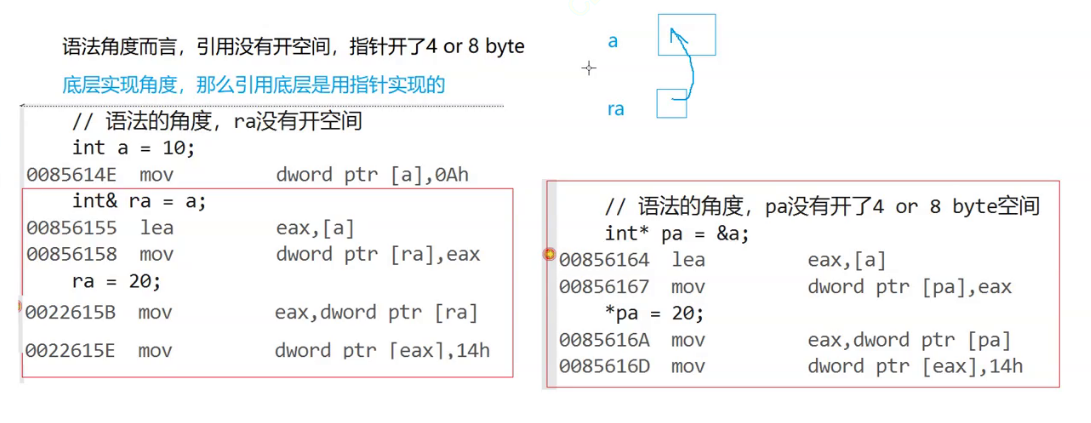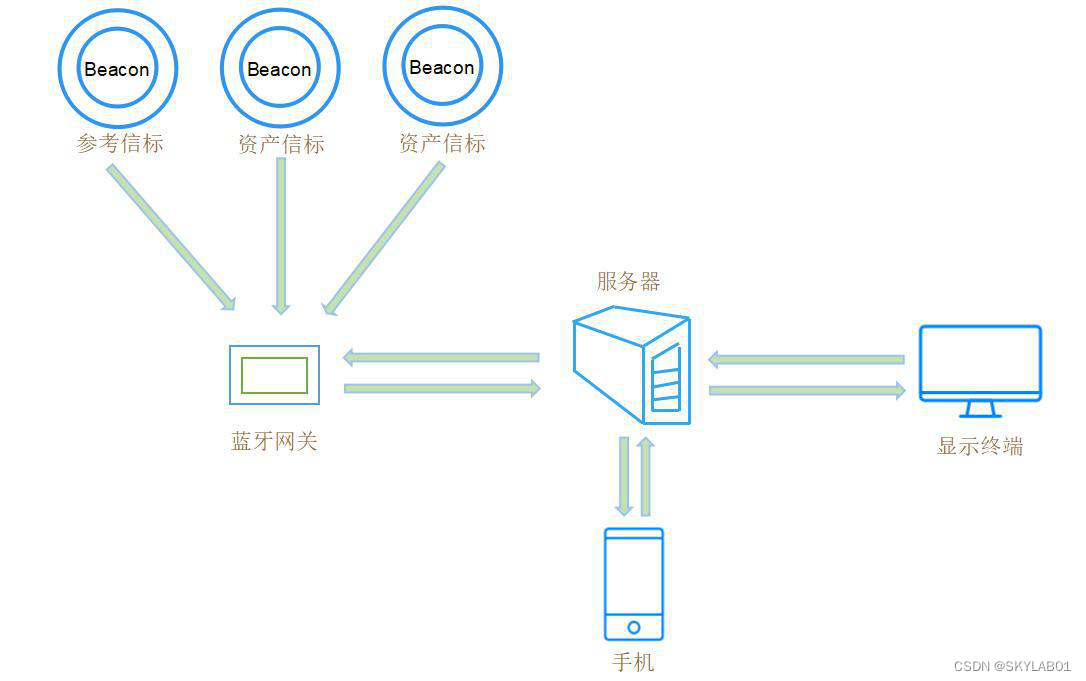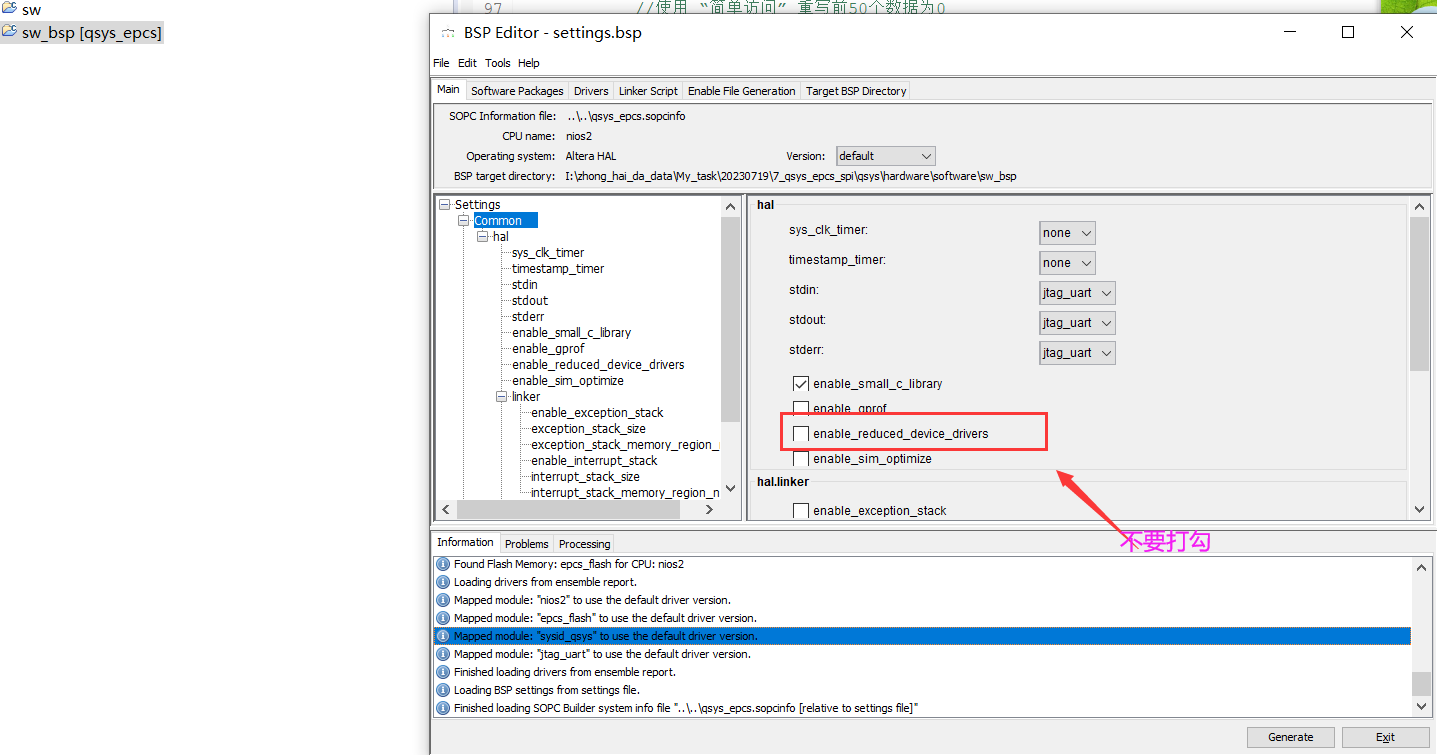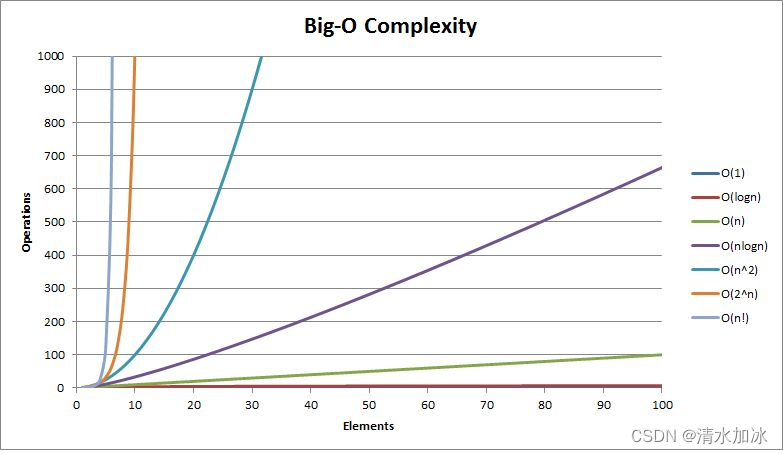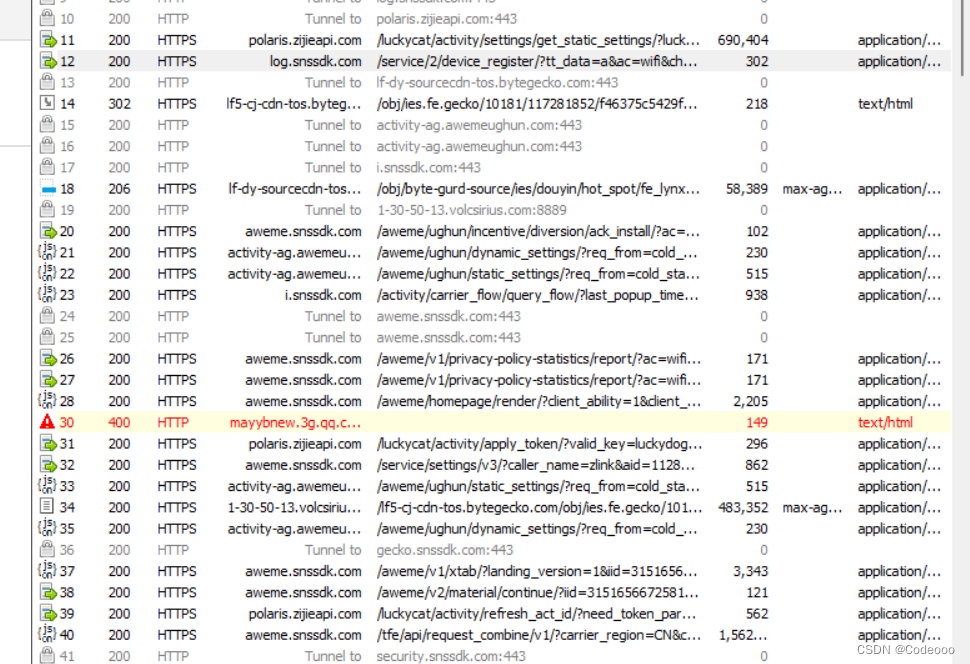文章目录
- 1. 链表和std::list
- 2. list的用法
- 2.1 list的定义和声明
- 2.2 成员函数
- 2.2.1 基本函数
- 构造函数
- operator=
- assign
- get_allocator
- 2.2.2 元素访问
- front
- back
- 2.2.3 迭代器
- begin、end和cbegin、cend
- rbegin、rend和crbegin、crend
- 2.2.4 容量
- empty
- size
- max_size
- 2.2.5 修改器
- clear
- insert
- emplace
- earse
- push_back
- emplace_back
- pop_back
- push_front
- emplace_front
- pop_front
- resize
- swap
- 2.2.6 操作
- merge
- splice
- remove、remove_if
- reverse
- unique
- sort
- 2.3 非成员函数
- operator==,!=,<,<=,>,>=,<=>(std::list)
- std::swap(std::list)
- std::erase, std::erase_if (std::list)
- 3. 总结
1. 链表和std::list
链表是一种在物理上非连续、非顺序的数据结构,数据元素的逻辑顺序是通过链表中的指针链接实现,其由若干节点所组成。std::list是C++中支持常数时间从容器任何位置插入和移除元素的容器,但其不支持快速的随机访问,其通常实现为双向链表。

由于链表的存储方式并不是连续的内存空间,因此链表list中的迭代器只支持前移和后移,属于双向迭代器。在std::list中添加、移动和移除元素不会使迭代器或引用失效,迭代器只有在对应元素被删除时才会失效。
2. list的用法
2.1 list的定义和声明
std::list在头文件<list>中定义,其声明如下:
emplate<
class T,
class Allocator = std::allocator<T>
> class list;
namespace pmr {
template< class T >
using list = std::list<T, std::pmr::polymorphic_allocator<T>>; //C++17 起
}
其中,参数T为容器要存储的元素类型,对于T需要满足:
- 可复制赋值和可复制构造(C++11前)。
- 要求元素类型是完整类型并满足可擦除,即元素类型的对象能以给定的分配器(Allocator)销毁(C++11 起,C++17 前)。
- 要求元素类型是完整类型并满足可擦除,但许多成员函数附带了更严格的要求。(C++17 起)。
Allocator为用于获取/释放内存及构造/析构内存中元素的分配器。
2.2 成员函数
2.2.1 基本函数
构造函数
功能描述
- 创建list容器。
函数原型
//1.默认构造函数。构造拥有默认构造的分配器的空容器。
list();
//2.构造拥有给定分配器 alloc 的空容器。
explicit list( const Allocator& alloc );
//3.构造拥有 count 个有值 value 的元素的容器。
explicit list( size_type count,
const T& value = T(),
const Allocator& alloc = Allocator()); //C++11 前
list( size_type count,
const T& value,
const Allocator& alloc = Allocator()); //C++11 起
//4.构造拥有 count 个 默认插入的 T 实例的容器。不进行复制。
explicit list( size_type count ); //C++11 起, C++14 前
explicit list( size_type count, const Allocator& alloc = Allocator() ); //C++14 起
//5.构造拥有范围 [first, last) 内容的容器。
template< class InputIt >
list( InputIt first, InputIt last,
const Allocator& alloc = Allocator() );
//6.复制构造函数。构造拥有 other 内容的容器。
list( const list& other );
//7.构造拥有 other 内容的容器,以 alloc 为分配器。
list( const list& other, const Allocator& alloc ); //C++11 起
//8.移动构造函数。用移动语义构造拥有 other 内容的容器。分配器通过属于 other 的分配器移动构造获得。
list( list&& other ); //C++11 起
//9.有分配器扩展的移动构造函数。以 alloc 为新容器的分配器,从 other 移动内容。
list( list&& other, const Allocator& alloc ); //C++11 起
//10.构造拥有 initializer_list init 内容的容器。
list( std::initializer_list<T> init,
const Allocator& alloc = Allocator() ); //C++11 起
示例
// C++11 初始化器列表语法:
std::list<std::string> words1 {"the", "frogurt", "is", "also", "cursed"};
//words1 = {"the", "frogurt", "is", "also", "cursed"}
// words2 == words1
std::list<std::string> words2(words1.begin(), words1.end());
//words2 = {"the", "frogurt", "is", "also", "cursed"}
// words3 == words1
std::list<std::string> words3(words1);
//words3 = {"the", "frogurt", "is", "also", "cursed"}
// words4 是 {"Mo", "Mo", "Mo", "Mo", "Mo"}
std::list<std::string> words4(5, "Mo");
//words4 = {Mo, Mo, Mo, Mo, Mo}
operator=
功能描述
- 用于赋值给容器。
函数原型
//复制赋值运算符。以 other 的副本替换内容。
list& operator=( const list& other );
//移动赋值运算符。用移动语义以 other 的内容替换内容(即从 other 移动 other 中的数据到此容器中)。之后other在合法但未指定的状态。
list& operator=( list&& other ); //C++11 起, C++17 前
list& operator=( list&& other ) noexcept(); //C++17 起
//以 initializer_list ilist 所标识者替换内容。
list& operator=( std::initializer_list<T> ilist ); //C++11 起
示例
std::list<int> nums1 {3, 1, 4, 6, 5, 9};
std::list<int> nums2;
std::list<int> nums3;
// 从 nums1 复制赋值数据到 nums2
nums2 = nums1;
//此时nums2 = {3, 1, 4, 6, 5, 9}
// 从 nums1 移动赋值数据到 nums3,
// 修改 nums1 和 nums3
nums3 = std::move(nums1);
//此时 nums1 = {}, nums3 = {3, 1, 4, 6, 5, 9}
// initializer_list 的复制赋值复制数据给 nums3
nums3 = {1, 2, 3};
//此时nums3 = {1, 2, 3}
assign
功能描述
- 将值赋给容器,替换容器的内容。
函数原型
//以 count 份 value 的副本替换内容。
void assign( size_type count, const T& value );
//以范围 [first, last) 中元素的副本替换内容。其中有任何一个迭代器是指向 *this 中的迭代器时行为未定义。
template< class InputIt >
void assign( InputIt first, InputIt last );
//以来自 initializer_list ilist 的元素替换内容。
void assign( std::initializer_list<T> ilist ); //C++11 起
示例
std::list<char> c;
c.assign(5, 'a');//此时c = {'a', 'a', 'a', 'a', 'a'}
const std::string str(6, 'b');
c.assign(str.begin(), str.end());//此时c = {'b', 'b', 'b', 'b', 'b', 'b'}
c.assign({'C', '+', '+', '1', '1'});//此时c = {'C', '+', '+', '1', '1'}
get_allocator
功能描述
- 返回相关的分配器。
函数原型
//返回值:与容器关联的分配器。
allocator_type get_allocator() const; //C++11 前
allocator_type get_allocator() const noexcept; //C++11 起
2.2.2 元素访问
front
功能描述
- 访问容器的第一个元素,其返回值为容器首元素的引用。
函数原型
reference front();
const_reference front() const;
注:在空容器上对
front的调用是未定义的。
back
功能描述
- 访问容器最后一个元素,其返回值为容器最后一个元素的引用。
函数原型
reference back();
const_reference back() const;
注:在空容器上对
back的调用是未定义的。
2.2.3 迭代器
begin、end和cbegin、cend
功能描述
- begin和cbegin返回指向list首元素的迭代器,
- end和cend返回指向list末元素后一元素的迭代器。
函数原型
iterator begin(); //C++11 前
iterator begin() noexcept; //C++11 起
const_iterator begin() const; //C++11 前
const_iterator begin() const noexcept; //C++11 起
const_iterator cbegin() const noexcept; //C++11 起
iterator end(); //C++11 前
iterator end() noexcept; //C++11 起
const_iterator end() const; //C++11 前
const_iterator end() const noexcept; //C++11 起
const_iterator cend() const noexcept; //C++11 起
如果list为空,则返回的迭代器将等于end或cend。end和cend指向list末元素后一元素的迭代器,该元素的表现为占位符,试图访问它将导致未定义行为。
rbegin、rend和crbegin、crend
功能描述
- rbegin和crbegin返回指向list首元素的逆向迭代器。它对应非逆向list的末元素,若list为空,则返回的迭代器等于rend或crend。
- rend和crend返回指向逆向list末元素后一元素的逆向迭代器,它对应非逆向list首元素的前一元素,此元素表现为占位符,试图访问它导致未定义行为。
函数原型
reverse_iterator rbegin(); //C++11 前
reverse_iterator rbegin() noexcept; //C++11 起
const_reverse_iterator rbegin() const; //C++11 前
const_reverse_iterator rbegin() const noexcept; //C++11 起
const_reverse_iterator crbegin() const noexcept; //C++11 起
reverse_iterator rend(); //C++11 前
reverse_iterator rend() noexcept; //C++11 起
const_reverse_iterator rend() const; //C++11 前
const_reverse_iterator rend() const noexcept; //C++11 起
const_reverse_iterator crend() const noexcept; //C++11 起
2.2.4 容量
empty
功能描述
- 检查容器是否为空,若为空则返回true,否则为false。
函数原型
bool empty() const; //C++11 前
bool empty() const noexcept; //C++11 起,C++20 前
[[nodiscard]] bool empty() const noexcept; //C++20 起
其底层实现就是检查容器是否无元素,即判断是否begin() == end()。
size
功能描述
- 返回容器中元素数量,即
std::distance(begin(), end())。
函数原型
size_type size() const; //C++11 前
size_type size() const noexcept; //C++11 起
max_size
功能描述
- max_size函数返回根据系统或库实现限制的容器可保有的元素最大数量,即对于最大容器的
std::distance(begin(), end())。
函数原型
size_type max_size() const; //C++11 前
size_type max_size() const noexcept; //C++11 起
注:此值通常反映容器大小上的理论极限,至多为
std::numeric_limits<difference_type>::max()。运行时,可用 RAM 总量可能会限制容器大小到小于max_size()的值。
2.2.5 修改器
clear
功能描述
- 擦除所有元素,使用
clear()后,再次调用size(),size函数返回0。
函数原型
void clear(); //C++11 前
void clear() noexcept; //C++11 起
insert
功能描述
- 插入元素到容器的指定位置。
函数原型
//在 pos 前插入 value。
//返回值:指向被插入 value 的迭代器。
iterator insert( const_iterator pos, const T& value );
iterator insert( const_iterator pos, T&& value ); //C++11 起
//在 pos 前插入 value 的 count 个副本。
//返回值:指向首个被插入元素的迭代器,或者在 count == 0 时返回 pos。
iterator insert( const_iterator pos, size_type count, const T& value );
//在 pos 前插入来自范围 [first, last) 的元素。
//返回值:指向首个被插入元素的迭代器,或者在 first == last 时返回 pos。
template< class InputIt >
iterator insert( const_iterator pos, InputIt first, InputIt last );
//在 pos 前插入来自 initializer_list ilist 的元素。
//返回值:指向首个被插入元素的迭代器,或者在 ilist 为空时返回 pos。
iterator insert( const_iterator pos, std::initializer_list<T> ilist ); //C++11 起
示例
std::list<int> c1(3, 100); //初始化c1,此时c1 = {100, 100, 100}
auto it = c1.begin();
it = c1.insert(it, 200); //在it前插入元素200
//c1 = {200,100, 100, 100}
c1.insert(it, 2, 300); //在it前插入两个元素值都为300
//c1 = {300,300,200,100, 100, 100}
// 将 it 重新指向开头
it = c1.begin();
std::list<int> c2(2, 400); //c2 = {400, 400}
c1.insert(std::next(it, 2), c2.begin(), c2.end()); //在it后两个元素(即200)的前面插入c2
//c1 = {300,300,400,400,200,100, 100, 100}
int arr[] = {501, 502, 503};
c1.insert(c1.begin(), arr, arr + std::size(arr));
//c1 = {501,502,503,300,300,400,400,200,100, 100, 100}
c1.insert(c1.end(), {601, 602, 603});
//c1 = {501,502,503,300,300,400,400,200,100, 100, 100,601,602,603}
emplace
功能描述
- 原位构造元素并将其在pos前插入到容器中。
函数原型
/*----------------------------------
pos:将构造新元素到其前的迭代器
args:转发给元素构造函数的参数
返回值iterator:指向被安置的元素的迭代器
------------------------------------*/
template< class... Args >
iterator emplace( const_iterator pos, Args&&... args ); //C++11 起
注:通过
std::allocator_traits::construct构造元素,用布置 new 在容器提供的位置原位构造元素。将参数
args...作为std::forward<Args>(args)...转发给构造函数。args...可以直接或间接地指代容器中的值。
earse
功能描述
- 擦除元素,
函数原型
//移除位于pos的元素
//返回值:最后移除元素之后的迭代器。如果pos指代末元素,则返回end()迭代器
iterator erase( iterator pos ); //C++11 前
iterator erase( const_iterator pos ); //C++11 起
//移除范围[first, last)中的元素。
/*返回值:最后移除元素之后的迭代器。
如果在移除前last == end(),那么最终返回end()迭代器
如果范围[first, last) 为空,那么返回 last。*/
iterator erase( iterator first, iterator last ); //C++11 前
iterator erase( const_iterator first, const_iterator last ); //C++11 起
注:指向被擦除元素的迭代器和引用会失效。其他引用和迭代器不受影响。
示例
std::list<int> c{0, 1, 2, 3, 4, 5, 6, 7, 8, 9};
c.erase(c.begin());
// c = {1, 2, 3, 4, 5, 6, 7, 8, 9}
std::list<int>::iterator range_begin = c.begin();
std::list<int>::iterator range_end = c.begin();
std::advance(range_begin, 2);
std::advance(range_end, 5);
c.erase(range_begin, range_end);
// c = {1, 2, 6, 7, 8, 9}
// 移除所有偶数
for (std::list<int>::iterator it = c.begin(); it != c.end();)
{
if (*it % 2 == 0)
it = c.erase(it);
else
++it;
}
// c = {1, 7, 9}
push_back
功能描述
将元素添加到容器末尾。
函数原型
//后附给定元素 value 到容器尾。初始化新元素为 value 的副本。
void push_back( const T& value );
//后附给定元素 value 到容器尾。移动 value 进新元素。
void push_back( T&& value ); //C++11 起
emplace_back
功能描述
emplace_back函数与emplace类似,只不过是在容器末尾就地构造元素。
函数原型
template< class... Args >
void emplace_back( Args&&... args ); //C++11 起,C++17 前
template< class... Args >
reference emplace_back( Args&&... args ); //C++17 起
由于emplace_back是原地构造元素,因此其插入效率要高于push_back。
pop_back
功能描述
移除末元素。
函数原型
void pop_back();
如果在空容器上调用pop_back会导致未定义行为。
注:指向被擦除元素的迭代器和引用会失效。
push_front
功能描述
插入元素到容器起始。
函数原型
void push_front( const T& value );
void push_front( T&& value ); //C++11 起
emplace_front
功能描述
在容器头部原位构造元素,与push_front功能相同,主要区别是其它典型地用布置 new 在容器所提供的位置原位构造元素。将参数 args... 作为 std::forward<Args>(args)... 转发给构造函数。
函数原型
template< class... Args >
void emplace_front( Args&&... args ); //C++11 起, C++17 前
template< class... Args >
reference emplace_front( Args&&... args ); //C++17 起
pop_front
功能描述
移除容器首元素。若容器中无元素,则行为未定义。指向被擦除元素的迭代器和引用会失效。
函数原型
void pop_front();
resize
功能描述
改变容器中可存储元素的个数,通过该函数可以重新设置容器大小。
函数原型
/*
该函数重设容器的大小为count,在count==size()时不做任何操作。
如果当前大小大于 count,那么减小容器到它的开头 count 个元素。
如果当前大小小于 count,那么后附额外的默认插入的元素。
*/
void resize( size_type count );
/*
该函数重设容器的大小为count,在count==size()时不做任何操作。
如果当前大小大于 count,那么减小容器到它的开头 count 个元素。
如果当前大小小于 count,那么后附额外的 value 的副本
*/
void resize( size_type count, const value_type& value );
示例
std::list<int> c = {1, 2, 3};
c.resize(5); //将其size增加大小到5
//c = {1, 2, 3, 0, 0}
c.resize(2); //将其size减少大小到2
//c = {1, 2}
c.resize(6, 4); //将其size增加大小到6,填充值为4";
//c = {1, 2, 4, 4, 4,4}
swap
功能描述
交换两个list容器的内容,不在单独的元素上调用任何移动、复制或交换操作。所有迭代器和引用保持有效。在操作后,未指明保有此容器中 end()值的迭代器指代此容器还是另一容器。
函数原型
void swap( list& other ); //C++17 前
void swap( list& other ) noexcept(); //C++17 起
示例
std::list<int> a1{1, 2, 3}, a2{4, 5};
auto it1 = std::next(a1.begin()); //*it1 = 2
auto it2 = std::next(a2.begin()); //*it2 = 5
int& ref1 = a1.front(); //ref1 = 1
int& ref2 = a2.front(); //ref1 = 4
std::cout <<*it1 << ' ' << *it2 << ' ' << ref1 << ' ' << ref2 << '\n';
//打印结果为2 5 1 4
a1.swap(a2);
//此时a1 = {4, 5},a2 = {1, 2, 3}
std::cout <<*it1 << ' ' << *it2 << ' ' << ref1 << ' ' << ref2 << '\n';
//打印结果仍为2 5 1 4
/*注:
交换后迭代器与引用保持与原来的元素关联,
例如尽管 'a1' 中值为 2 的元素被移动到 'a2' 中,
原来指向它的 it1 仍指向同一元素。*/
2.2.6 操作
merge
功能描述
合并二个已排序列表。
函数原型
//用 operator< 比较元素
void merge( list& other );
void merge( list&& other ); //C++11 起
//用给定的比较函数 comp 比较元素。
template < class Compare >
void merge( list& other, Compare comp );
template < class Compare >
void merge( list&& other, Compare comp ); //C++11 起
如果 other 与*this指代同一对象,那么什么也不做。否则将两个已经排序列表归并为一个。链表应以升序排序。不复制元素,并且在操作后容器other会变空。不会无效化任何引用或者迭代器,但被移动元素的迭代器现在指代到*this中,而不是到other中。
注:对于两个链表中的等价元素,来自 *this 的元素始终在来自 other 的元素之前,并且 *this 和 other 的等价元素顺序不更改。如果 get_allocator() != other.get_allocator(),那么行为未定义。
示例
std::list<int> list1 = {5, 9, 1, 3, 3};
std::list<int> list2 = {8, 7, 2, 3, 4, 4};
list1.sort(); // 1 3 3 5 9
list2.sort(); // 2 3 4 4 7 8
list1.merge(list2); //1 2 3 3 3 4 4 5 7 8 9
splice
功能描述
从一个 list 转移元素给另一个。
函数原型
/*《参数说明》
pos - 将插入内容到它之前的元素
other - 要从它转移内容的另一容器
it - 要从 other 转移到 *this 的元素
first, last - 要从 other 转移到 *this 的元素范围
*/
/*从 other 转移所有元素到 *this 中。元素被插入到 pos 指向的元素之前。
操作后容器 other 变为空。other 与 *this 指代同一对象时行为未定义。*/
void splice( const_iterator pos, list& other );
void splice( const_iterator pos, list&& other ); //C++11 起
/*从 other 转移 it 指向的元素到 *this。元素被插入到 pos 指向的元素之前。*/
void splice( const_iterator pos, list& other, const_iterator it );
void splice( const_iterator pos, list&& other, const_iterator it ); //C++11 起
/*从 other 转移范围 [first, last) 中的元素到 *this。
元素被插入到 pos 指向的元素之前。pos 是范围 [first,last) 中的迭代器时行为未定义。*/
void splice( const_iterator pos, list& other,
const_iterator first, const_iterator last);
void splice( const_iterator pos, list&& other,
const_iterator first, const_iterator last ); //C++11 起
不复制或移动元素,仅重指向链表结点的内部指针。get_allocator() != other.get_allocator() 时行为未定义。没有迭代器或引用会失效,指向被移动元素的迭代器保持有效,但现在指代到 *this 中,而非到 other 中。
示例
std::list<int> list1 = {1, 2, 3, 4, 5};
std::list<int> list2 = {10, 20, 30, 40, 50};
auto it = list1.begin();
list1.splice(it, list2);
//list1 = {10, 20, 30, 40, 50, 1, 2, 3, 4, 5};
//list2 = {};
list2.splice(list2.begin(), list1, it, list1.end());
//list1 = {10, 20, 30, 40, 50};
//list2 = {1, 2, 3, 4, 5};
remove、remove_if
功能描述
移除满足特定标准的元素。
函数原型
//移除所有等于 value 的元素
void remove( const T& value ); //C++20 前
size_type remove( const T& value ); //C++20 起
//移除所有谓词 p 对它返回 true 的元素
template< class UnaryPredicate >
void remove_if( UnaryPredicate p ); //C++20 前
template< class UnaryPredicate >
size_type remove_if( UnaryPredicate p ); //C++20 起
示例
std::list<int> l = { 1,100,2,3,10,1,11,-1,12 };
l.remove(1); // 移除两个等于 1 的元素
l.remove_if([](int n){ return n > 10; }); // 移除全部大于 10 的元素
for (int n : l) {
std::cout << n << ' ';
}
std::cout << '\n';
//输出结果:2 3 10 -1
reverse
功能描述
将该链表的所有元素的顺序反转。逆转容器中的元素顺序。不非法化任何引用或迭代器。
函数原型
void reverse(); //C++11 前)
void reverse() noexcept; //C++11 起
示例
std::list<int> list = { 8,7,5,9,0,1,3,2,6,4 };
list.reverse(); //4 6 2 3 1 0 9 5 7 8
unique
功能描述
删除连续的重复元素。从容器移除所有相继的重复元素。只留下相等元素组中的第一个元素。若选择的比较器不建立等价关系则行为未定义。
函数原型
//用 operator== 比较元素。
void unique(); //C++20 前
size_type unique(); //C++20 起
//用二元谓词 p 比较元素。
template< class BinaryPredicate >
void unique( BinaryPredicate p ); //C++20 前
template< class BinaryPredicate >
size_type unique( BinaryPredicate p ); //C++20 起
示例
std::list<int> c = {1, 2, 2, 3, 3, 2, 1, 1, 2};
c.unique();// 1 2 3 2 1 2
c = {1, 2, 12, 23, 3, 2, 51, 1, 2};
c.unique([mod=10](int x, int y) { return (x % mod) == (y % mod); });
//1 2 23 2 51 2
sort
功能描述
对元素进行排序。以升序排序元素。保持相等元素的顺序。
函数原型
//用 operator< 比较元素
void sort();
//用给定的比较函数 comp, 在第一参数小于(即先序于)第二参数时返回 true。
template< class Compare >
void sort( Compare comp );
示例
std::list<int> list = { 8,7,5,9,0,1,3,2,6,4 };
list.sort();//0 1 2 3 4 5 6 7 8 9
list.sort(std::greater<int>());//9 8 7 6 5 4 3 2 1 0
list = {1, 2, 14, 25, 3, 22};
//按照元素个位数的大小进行排序
list.sort([mod = 10](int x, int y)
{ return (x % mod) < (y % mod); });//1 2 22 3 14 25
2.3 非成员函数
operator==,!=,<,<=,>,>=,<=>(std::list)
功能描述
按照字典顺序比较 list 中的值。
函数声明
//1. ==
//返回值:在 list 内容相等时返回 true,否则返回 false
template< class T, class Alloc >
bool operator==( const std::list<T, Alloc>& lhs,
const std::list<T, Alloc>& rhs );
//2. !=
//返回值:在 list 内容不相等时返回 true,否则返回 false
template< class T, class Alloc >
bool operator!=( const std::list<T, Alloc>& lhs,
const std::list<T, Alloc>& rhs ); //C++20 前
//3. <
//返回值:在 lhs 的内容按字典序小于 rhs 的内容时返回 true,否则返回 false
template< class T, class Alloc >
bool operator<( const std::list<T, Alloc>& lhs,
const std::list<T, Alloc>& rhs ); //C++20 前
//4. <=
//返回值:在 lhs 的内容按字典序小于或等于 rhs 的内容时返回 true,否则返回 false
template< class T, class Alloc >
bool operator<=( const std::list<T, Alloc>& lhs,
const std::list<T, Alloc>& rhs ); //C++20 前
//5. >
//返回值:在 lhs 的内容按字典序大于 rhs 的内容时返回 true,否则返回 false
template< class T, class Alloc >
bool operator>( const std::list<T, Alloc>& lhs,
const std::list<T, Alloc>& rhs ); //C++20 前
//6. >=
//返回值:在 lhs 的内容按字典序大于或等于 rhs 的内容时返回 true,否则返回 false
template< class T, class Alloc >
bool operator>=( const std::list<T, Alloc>& lhs,
const std::list<T, Alloc>& rhs ); //C++20 前
//7. <=>
//返回值:lhs 与 rhs 中的首对不等价元素的相对顺序,如果有这种元素;否则是 lhs.size() <=> rhs.size()。
template< class T, class Alloc >
operator<=>( const std::list<T, Alloc>& lhs,
const std::list<T, Alloc>& rhs ); //C++20 起
-
1,2中会检查 lhs 与 rhs 的内容是否相等,即它们是否拥有相同数量的元素且 lhs 中每个元素与 rhs 的同位置元素比较相等。
-
3-6中按照字典比较lhs和rhs的内容,其内部等价于调用
std::lexicographical_compare函数进行比较。 -
7中也是按字典序比较lhs和rhs的内容。其内部等价于调用
std::lexicographical_compare_three_way进行比较。返回类型同合成三路比较的结果类型。其逻辑大致如下:lhs < rhs ? std::weak_ordering::less : rhs < lhs ? std::weak_ordering::greater : std::weak_ordering::equivalent //注:通常情况下less对应的是-1,greater对应1,equivalent对应0lhs与rhs中的首对不等价元素的相对顺序,如果有这种元素;否则是
lhs.size() <=> rhs.size()。
示例
std::list<int> alice{1, 2, 3};
std::list<int> bob{7, 8, 9, 10};
std::list<int> eve{1, 2, 3};
std::cout << std::boolalpha;
// 比较不相等的容器
std::cout << "alice == bob returns " << (alice == bob) << '\n';
std::cout << "alice != bob returns " << (alice != bob) << '\n';
std::cout << "alice < bob returns " << (alice < bob) << '\n';
std::cout << "alice <= bob returns " << (alice <= bob) << '\n';
std::cout << "alice > bob returns " << (alice > bob) << '\n';
std::cout << "alice >= bob returns " << (alice >= bob) << '\n';
std::cout << '\n';
// 比较相等的容器
std::cout << "alice == eve returns " << (alice == eve) << '\n';
std::cout << "alice != eve returns " << (alice != eve) << '\n';
std::cout << "alice < eve returns " << (alice < eve) << '\n';
std::cout << "alice <= eve returns " << (alice <= eve) << '\n';
std::cout << "alice > eve returns " << (alice > eve) << '\n';
std::cout << "alice >= eve returns " << (alice >= eve) << '\n';
输出结果为
alice == bob returns false
alice != bob returns true
alice < bob returns true
alice <= bob returns true
alice > bob returns false
alice >= bob returns false
alice == eve returns true
alice != eve returns false
alice < eve returns false
alice <= eve returns true
alice > eve returns false
alice >= eve returns true
std::swap(std::list)
功能描述
std::list特化 std::swap算法。
函数原型
template< class T, class Alloc >
void swap( std::list<T, Alloc>& lhs,
std::list<T, Alloc>& rhs ); //C++17 前
template< class T, class Alloc >
void swap( std::list<T, Alloc>& lhs,
std::list<T, Alloc>& rhs ) noexcept(); //C++17 起
交换 lhs 与 rhs 的内容。调用lhs.swap(rhs)。
示例
std::list<int> a1{1, 2, 3}, a2{4, 5};
auto it1 = std::next(a1.begin()); //*it1 = 2
auto it2 = std::next(a2.begin()); //*it2 = 5
int &ref1 = a1.front(); // ref1 = 1
int &ref2 = a2.front(); // ref1 = 4
std::cout << *it1 << ' ' << *it2 << ' ' << ref1 << ' ' << ref2 << '\n';
// 打印结果为2 5 1 4
std::swap(a1, a2);
// 此时a1 = {4, 5},a2 = {1, 2, 3}
std::cout << *it1 << ' ' << *it2 << ' ' << ref1 << ' ' << ref2 << '\n';
// 打印结果仍为2 5 1 4
/*注:
交换后迭代器与引用保持与原来的元素关联,
例如尽管 'a1' 中值为 2 的元素被移动到 'a2' 中,
原来指向它的 it1 仍指向同一元素。*/
std::erase, std::erase_if (std::list)
功能描述
函数主要用来擦除所有满足特定判别标准的元素。
函数原型
//从容器中擦除所有比较等于value的元素,
//等价于 return c.remove_if([&](auto& elem) { return elem == value; });
template< class T, class Alloc, class U >
typename std::list<T, Alloc>::size_type
erase(std::list<T, Alloc>& c, const U& value); //C++20 起
//从容器中擦除所有满足pred的元素,pred为应该擦除元素则返回true的一元谓词。
//等价于 return c.remove_if(pred);
template< class T, class Alloc, class Pred >
typename std::list<T, Alloc>::size_type
erase_if(std::list<T, Alloc>& c, Pred pred); //C++20 起
返回值为被擦除的元素数。
示例
std::list<int> c{1, 2, 3, 4, 6};
// 擦除c中的值等于3的元素
auto erased1 = std::erase(c, 3); // erased1 = 1
// 此时c = {1, 2, 4, 6}
// 擦除c中的偶数
auto erased2 = std::erase_if(c, [](int n)
{ return n % 2 == 0; }); // erased2 = 3
// 此时c = {1}
3. 总结
list容器的优势和劣势:
优势
- 采用动态内存分配,不会造成内存浪费和溢出。
- 执行插入和删除操作十分方便、高效。修改指针即可,不需要移动大量元素。
劣势
- 空间(指针域)和时间(遍历)额外耗费比较大。
文章首发公众号:iDoitnow如果喜欢话,可以关注一下


